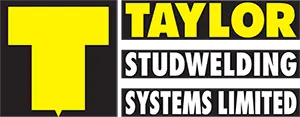


+44 (0) 1924 452123
sales@taylor-studwelding.com

Short cycle stud welding is a quicker form of the drawn arc stud welding process for attaching metal studs and other fasteners to metal sheets. It only takes from 10 up to 100 milliseconds to attach the stud to the parent sheet using this method. CD weld studs can be used but, unlike CD stud welding, this process is suitable to use on slightly thicker sheet metals that are uneven or have imperfections. By bringing together elements of the DA and CD processes, Short Cycle proves to be a very effective method for applications where the parent material is thinner than what DA stud welding can tolerate, but you don’t require the full DA process to still get great results.
Short cycle is similar to drawn arc stud welding and types of arc welding in many respects, as it requires three-phase power and a 415-volt power supply. However, this process is much faster and does not use a ferrule. Plus, the equipment and studs you can use for SC are much cheaper than those for DA. On the other hand, it can’t use weld studs as large as those used in Drawn Arc and is suited to thinner parent materials, so choosing SC stud welding really depends upon your setup!
Short Cycle Stud Welding Requirements
Parent material with a thickness greater than 1.7mm (for thinner materials CD stud welding is the best choice, whereas for materials of 2mm and above DA may be the better process).
Three phase power source with 415-volt power supply.
Threaded CD studs of M3 to M8 in diameter (see our CD weld studs catalogue to find out more).
Consider using shrouding gas for improved weld fillet formation and spatter reduction.
How Short Cycle Stud Welding Works

Pre-set the weld time and current according to the stud diameter. Place the stud on the parent material.
Trigger the gun to produce a pilot arc as the stud lifts to a pre-set height.
The following main arc creates a molten pool in the sheet metal and melts the weld end of the stud.
Return pressure forges the stud and molten pool. You won’t require a ferrule to shape the fillet.
The weld is now complete and you can pull the handtool off the stud.
Short Cycle Stud Welding Benefits
There are many benefits to the Short Cycle stud welding process in comparison to both the CD and DA processes. These benefits include:
Lower Equipment Costs
You can use cheaper CD weld studs with the short cycle method, which also doesn’t require a CD pip. SC equipment is also generally cheaper than DA equipment.
Higher Tolerance Levels
Unlike CD stud welding, SC stud welding can handle surface irregularities and imperfections in a way similar to the drawn arc process. SC is also suitable for hot rolled or coated materials.
Convenience
Unlike DA stud welding, Short Cycle doesn’t require ferrules and equipment is very easy to jig. However, it’s important to note that using shrouding gas will improve upon weld fillet formation and reduce spatter.
Automation
It is easy to automate the SC process for even faster operations, saving a lot of money for companies with sizeable outputs.
Interested in adopting short cycle stud welding for your operations? Get in touch with Taylor Studwelding and we can advise you on how to implement this highly effective process.


